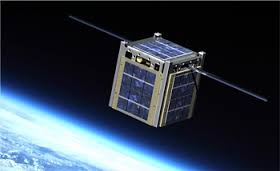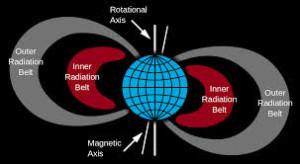NASA wants to turn CubeSats into the next planetary explorers and Gumstix can help do it. CubeSats are relatively inexpensive satellites that are low power, low weight, and small in size.
The hope of the program is to send multiple CubeSats that could be deployed onto a planet’s surface at various locations. The sensors on board would then communicate back to the mother ship which would feed the information back to earth. The versatility of CubeSats allow for each satellite to be customized for the function it will serve and the terrain it will be deployed to.
But there is a few hurdles along the way that Dr. Kathleen Morse is interested in addressing in regards to radiation effects. Dr. Morse, founder of Yosemite Space and a CASIS sponsored principal investigator, aims to take a systematic look at radiation effects in low-Earth orbit on Commercial Off-The-Shelf (COTS) technologies using both ground-based and space based testing. Many COTS technologies fit the power requirements of CubeSats in addition to having a small profile and low weight.
However, over 65% of CubeSats in low-Earth orbit (LEO) fail with an average launch cost of $40,000 per kg. Some of these failures are due to malfunctioning of the electronics onboard, much of which is caused by radiation. Although some of this radiation can be mitigated by shielding, there may be other techniques that can be used to mitigate its effects even further with software and specialized hardware.
Why is it important? Low Earth orbit is the orbit around Earth between 160km and 2,000km, just below the inner Van Allen radiation belt. All manned space missions have taken place in LEO. Objects in this region experience relatively benign radiation. Passing through the Van Allen radiation belts exposes objects to vast amounts of radiation, causing much more damage to unshielded objects. Studying how to mitigate radiation in LEO will help strengthen COTS technologies so that they can be used in the exploration of areas beyond the current scope of CubeSats.
In LEO, radiation exists mainly from solar protons and heavy ions in concentrations ranging in many orders of magnitude. For example, over a six month period, a CubeSat positioned directly outside the International Space Station could experience a total ionizing dose of less than 0.1 krad. This is fairly innocuous in LEO.
The CubeSat can also experience three types of single event effects or effects caused by one particle. In a latch up event, the particle causes transistors to become a short circuit and the electrical current bounces around until it sticks or latches up. In a single event functional interruption, signals are still able to be sent but not read. In a single event upset, miscalculations occur affecting computer memory.Single event effects can be mitigated by integrating watchdog circuits that monitor the events and then perform a power reboot when necessary. The implementation of fault tolerant architecture is also useful including non-voting or voting redundancies.
Key questions Dr. Morse is looking to answer are:
– How does the LEO space environment affect Gumstix modules?
– What is the net operation time for each Gumstix module while in space?
– Is Gumstix module performance affected by feature size?
Dr. Morse has been testing four of Gumstix’ Overo family of COMs at a proton lab. Modeling shows that 6 months in space would cause Gumstix COMs to have about 41 proton events and 82 high-energy that have transient effects. The COMs would also experience anywhere between 2 and 20 latch up events requiring a hard reset of the COM. Dr. Morse’s CubeSat is expected to launch into space this September. We look forward to helping to progress her goals towards a reliable and affordable computing platform for CubeSats.




 RSS
RSS